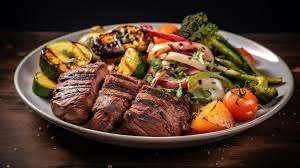Eating After a Whipple’s Procedure (Pancreaticoduodenectomy)
Article5 September 2025

Recovering from a Whipple’s procedure is a major milestone, but one of the most important – and often most challenging – parts of the healing comes afterwards: learning how to eat again.
This article, Professor Bartlett shares expert guidance on what to expect, common hurdles and practical tips to help patients navigate eating after surgery with confidence.
What is a Whipple’s Procedure?
Pancreaticoduodenectomy surgery removes parts of the pancreas, small intestine (duodenum), bile duct, gallbladder, and sometimes part of the stomach. These changes affect digestion and how your body absorbs nutrients.
What You Might Experience
After surgery, you may notice:
- Feeling full quickly (early satiety)
- Bloating, nausea, or vomiting
- Changes in bowel habits (loose, oily, or pale stools)
- Reduced appetite or difficulty maintaining weight
- Reflux or indigestion
How to Eat and Drink
Eat Small, Frequent Meals
- Aim for 5–8 small meals or snacks each day
- Eat slowly and chew food well
- Use smaller plates to avoid feeling overwhelmed
- Set reminders to eat if your appetite is poor and “eat to the clock”. It may help to set alarms to remind yourself to have something to eat or drink.
Time Fluids Wisely
- Drink fluids at least 30–60 minutes before or after meals
- Avoid drinking large volumes during meals, as this can make you feel full too quickly.
Food Choices
- Protein at every meal: include foods like meat, fish, chicken, eggs, dairy, legumes, tofu, or protein shakes
- Energy-rich foods: add oils, butter, cream, cheese, nut butters, or avocado to meals if tolerated
- Nourishing fluids: include milk, smoothies, soups, or nutrition drinks like Sustagen, Complan, or Ensure
- Easy-to-digest carbohydrates: white bread, rice, pasta, peeled or cooked fruits and vegetables
- Avoid high-fiber, fried, or very fatty foods in the early recovery period
Pancreatic Enzyme Replacement (Creon®)
After surgery, your pancreas may not produce enough enzymes to digest food properly.
- You will likely need to take pancreatic enzymes (such as Creon®) with meals and snacks
- Creon is a capsule that contains pancreatic enzymes, that help to digest the food.
- Take the enzymes at the start of your meal, especially when eating foods that contain fat or protein
- If stools become pale, oily, or difficult to flush, or if you have bloating or weight loss, your enzyme dose may need to be adjusted
Managing Digestive Challenges
Challenge |
What You Can Do |
| Feeling full quickly | Eat smaller meals more often, avoid drinking with meals |
| Dumping symptoms | Avoid sugary foods/drinks, eat slowly, rest after eating if needed |
| Oily stools | Ensure you’re taking enough pancreatic enzymes |
| Nausea or reflux | Eat bland, dry foods, avoid strong smells or lying down straight after meals |
Hydration and Nutritional Drinks
- Aim for 6–10 cups (1.5–2.5 litres) of fluid each day
- Use drinks that also provide energy and protein, such as milk, smoothies, or nutrition supplements
- Sip fluids slowly throughout the day
Ongoing Monitoring
- Your doctor or dietitian may check your blood for vitamin and mineral levels
- Periodically your doctor or dietitian will arrange for a stool sample to be analysed to see if you are making enough pancreatic enzymes or whether you are taking sufficient pancreatic enzyme replacement
- You may need vitamin supplements if your body isn’t absorbing nutrients well
- Regular follow-up with a dietitian is important to adjust your diet and enzyme use as your recovery progresses
When to Seek Help
Contact your healthcare provider if you:
- Continue to lose weight
- Have ongoing nausea or vomiting
- Notice fatty, foul-smelling or floating stools
- Feel weak or excessively tired
- Have difficulty managing your diet or enzyme therapy
Key Tips to Remember
- Eat small, protein-rich meals often
- Drink fluids between – not during – meals
- Use pancreatic enzymes with meals and snacks
- Gradually introduce foods as you feel able
- Don’t wait to seek help if symptoms are affecting your recovery
